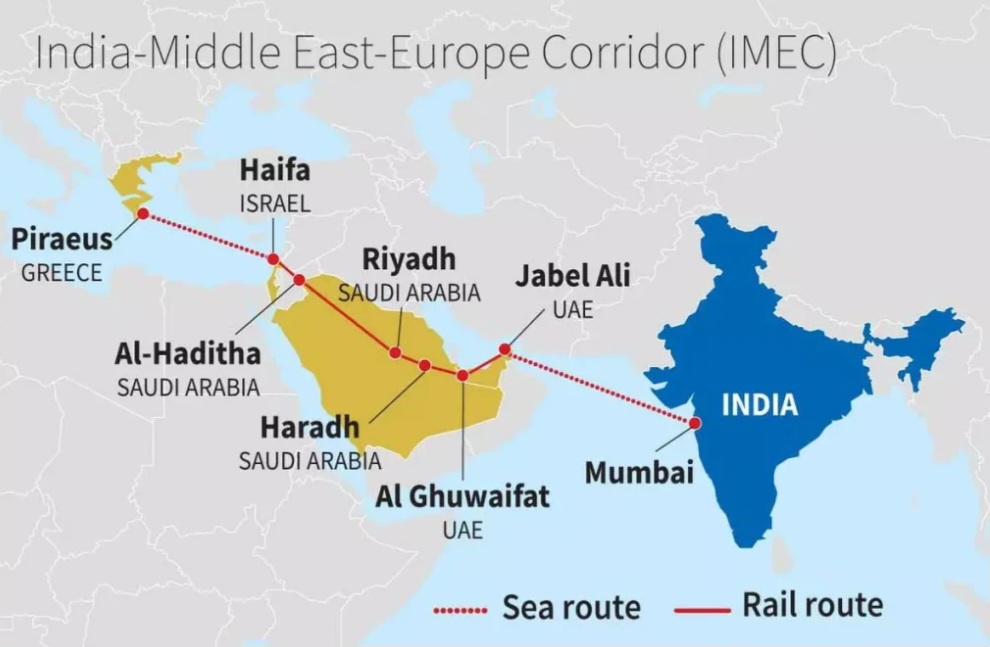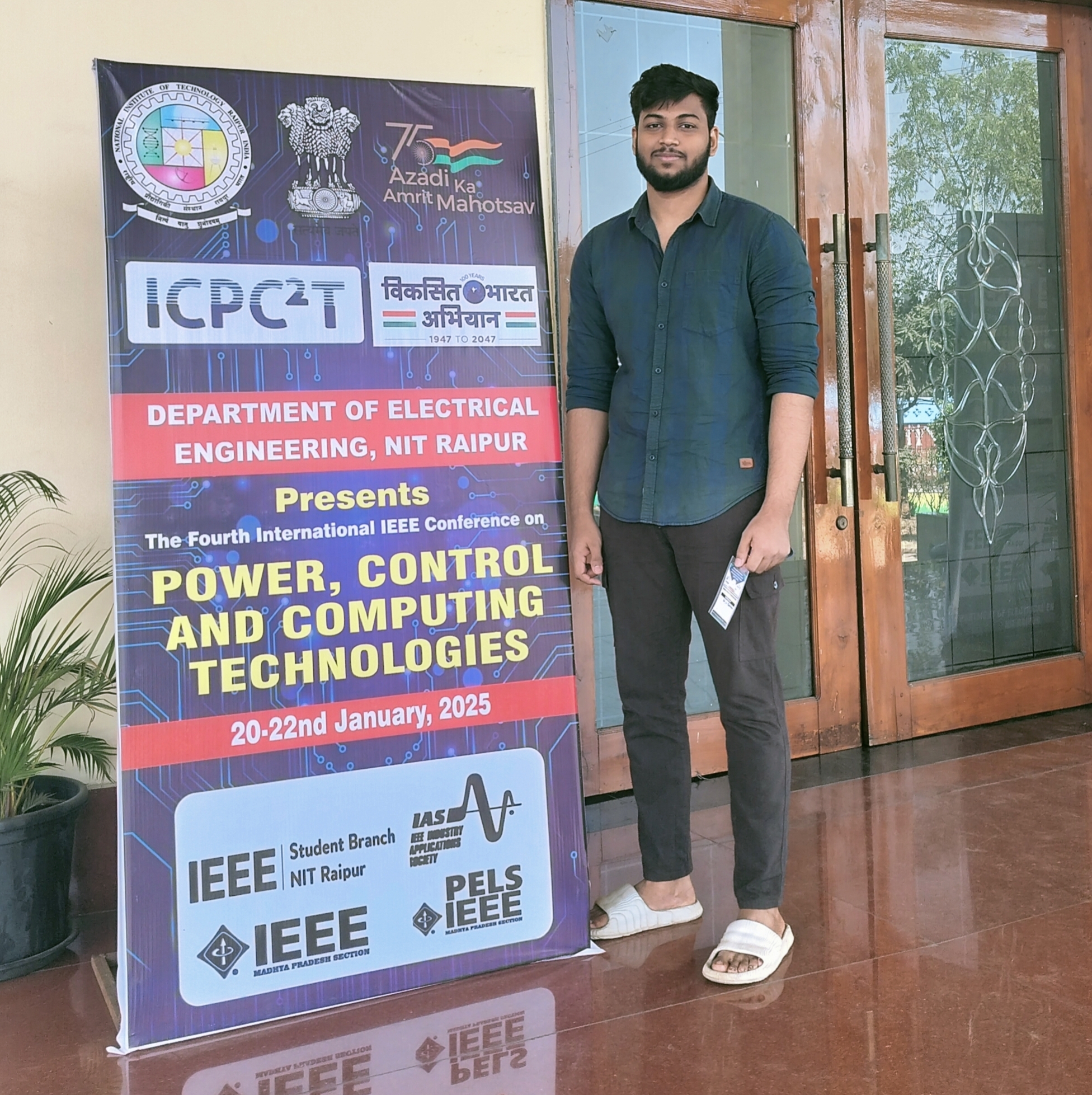By: Sanjay Mummana, Research Analyst, GSDN

The India-Middle East-Europe Economic Corridor (IMEC) was among the most ambitious international connectivity projects announced in the recent years. On September 09, 2023, it was officially announced at the G20 Summit in New Delhi. It is projected that the project will connect India to Europe through a railroad system, ports, and shipping routes that will pass through the United Arab Emirates, Saudi Arabia, Jordan, Israel and then to Greece and the rest of Europe. It was seen as a game changer that would enhance trade, energy cooperation and political relations between Asia, Middle East, and Europe.
The announcement of IMEC was generally perceived to be in opposition to the Belt and Road Initiative (BRI) of China, which is already spreading in Asia, Africa, and Europe. In contrast to BRI, IMEC was focused on transparency, sustainable development, and joint investment. To India it provided a direct land-sea connection to Europe without having to use the Suez Canal or the China-Pakistan Economic Corridor. To the Gulf countries, it was a new non-oil logistics and digital opportunity. To Europe and the United States, it was a means of diversifying trade routes and reducing the increasing influence of China.
The IMEC project is under serious doubt two years after its grand launch. The excitement that was attached to its announcement has died because of a few political and practical issues. The greatest failure was experienced following the outbreak of war in Gaza. The war has paralyzed the process of normalization between Israel and the Arab states which was a critical pillar to the success of IMEC. Saudi Arabia and Israel were supposed to be the major partners in the corridor, yet their relations deteriorated as the war escalated and humanitarian issues were raised. The central route of the corridor is blocked without political cooperation between these two countries.
Besides the war, the other significant issue is the uncertainties regarding the funding and management of IMEC. To date, there is no elaborate plan or budget. The corridor was declared as a collective initiative of India, the United States, the European Union, and the Gulf states but there is no official body or secretariat established to organize it. The countries have shown interest, but unless there is institutional support, the project will be just on paper. Conversely, the BRI of China already has an established mechanism that is long-term financed by the Asian Infrastructure Investment Bank and the Silk Road Fund.
Practical infrastructure challenges also exist. The construction of new railway lines through deserts in Saudi Arabia and linking them to the existing ports in UAE, Jordan, and Israel will take years to be constructed and will cost colossal amounts of money. Another challenging task is to harmonize technical standards, customs procedures, and logistics among so many countries. In addition, the strategy to transport goods effectively between Indian ports such as Mundra or Nhava Sheva to Europe via the Mediterranean involves advanced port handling systems and digital tracking, which is yet to be developed.
The other issue is that IMEC competes with other projects in the region. Turkey has also offered its own trade route called the Iraq Development Road that will link the gulf to Europe via Turkish ports. China is also building on its Belt and Road relationships with the Middle East, particularly Saudi Arabia and the UAE, both of which are also members of the BRI. This conflict of interests causes confusion regarding the areas where countries would invest their resources. Indicatively, Saudi Arabia might not be willing to be fully committed to IMEC when it already enjoys strong economic relations with China.
Whether the partners have the same strategic goals is also a question. In the case of India, IMEC is concerned with the ease of accessing European markets and becoming more involved in international trade. In the case of the United States and Europe, it concerns the establishment of a political alliance that will make China less powerful. In the case of Gulf countries, it concerns mostly economic diversification and logistics. In case the motivations are not the same, it is difficult to have shared priorities and schedules.
However, these challenges have not completely abandoned IMEC. India continues to market the concept at the global level. On May 13, 2024, Prime Minister Narendra Modi paid a visit to the United Arab Emirates, during which both parties discussed the ways to advance the corridor. On July 16, 2024, the European Union said that it was still willing to consider how the project could be reinstated when the situation in the region was stable. But the development has been slow and most of the work has been confined to discussions and not real construction.
IMEC currently seems to be a long-term vision rather than a project. The concept remains strategically powerful, yet its effectiveness will be determined by the peace in the Middle East and the enhancement of the collaboration between partners. In the absence of stability and proper financial framework, IMEC could end up the same way as most other ambitious regional projects which were initiated with great expectations but failed to become a reality.
The future of IMEC is now hinged on whether the participating countries will be able to overcome political suspicion and establish a clear and transparent roadmap. In case the peace is restored in the region and the partners coordinate their objectives, IMEC might turn into a strong symbol of the cooperation between the continents. Up to that point, it is a good dream that is awaiting the appropriate circumstances to materialize.

About the Author
Sanjay Mummana is currently working as a System Analyst at the National Stock Exchange. He has completed his graduation from the National Institute of Technology Karnataka, Surathkal, with a major in Mechanical Engineering and a minor in Computer Science and Engineering. Alongside his professional role, he is preparing for the UPSC CAPF (Assistant Commandant) examination.

